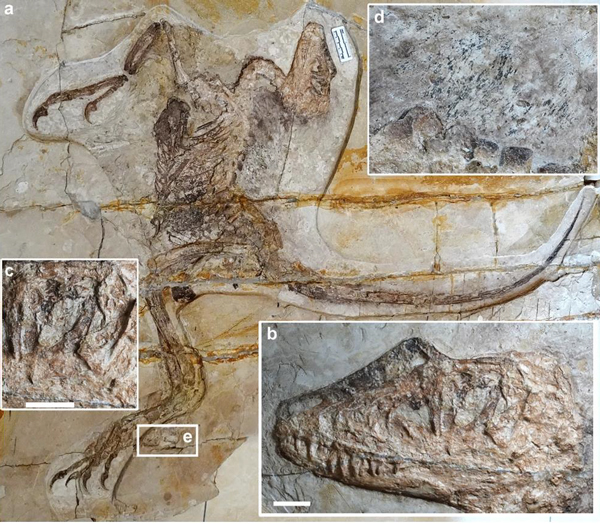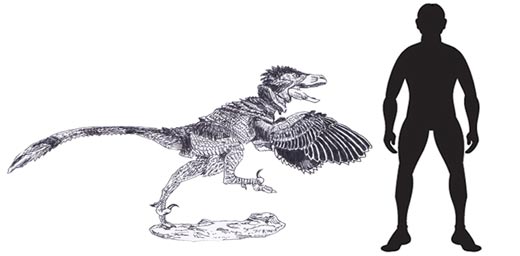New Dromaeosaurid Species with Preserved Intestinal Tract
A new species of Chinese dromaeosaurid dinosaur has been described based on superbly preserved remains found in Inner Mongolia. The new dromaeosaurid species has been named Daurlong wangi and a phylogenetic assessment suggests that this dinosaur was closely related to Tianyuraptor and Zhenyuanlong.

Daurlong wangi
Described by the scientists, which include researchers from Chinese Academy of Geological Sciences and the Inner Mongolia Museum of Natural History, as a mid-sized dromaeosaurid, Daurlong is estimated to have been around 1.5 metres long. The nearly complete specimen comes from Lower Cretaceous exposures of the Longjiang Formation in the Morin Dawa Daur Autonomous Banner (Inner Mongolia). The fossilised remains were excavated from Pigeon Hill, apt as this feathered dinosaur was related to modern birds (Aves). Both birds and the Dromaeosauridae are members of the Eumaniraptora clade.
New Dromaeosaurid Species
The binomial scientific name for this new dromaeosaurid is derived from the indigenous Daur Nation and from the Chinese word for dragon. The species name honours the director of the Inner Mongolia Museum of Natural History, Mr Wang Junyou.

Finding a Frog
Some evidence of plumage is preserved along the top of the back of the skull, around the trunk and along the edges of the tail. The scientists writing in the academic journal “Scientific Reports” found no evidence of preserved melanosomes in association with the feather filaments.
A bluish layer located towards the back of the rib cage has been putatively described as remnants of the intestines. Such a soft tissue discovery would be exceptionally rare within the Dinosauria, and could help inform palaeontologists over the origins and evolution of the digestive tract of birds and other closely related genera.
The fossilised remains of a small frog were found in the same slab as the Daurlong specimen. Everything Dinosaur is not aware of any gut contents indicating that this small, meat-eater ate frogs, but it is very likely that Daurlong would have consumed amphibians such as frogs as well as lizards and small mammals.

The Beasts of the Mesozoic range of articulated prehistoric animal figures contains several examples of Cretaceous dromaeosaurids.
To view the Beasts of the Mesozoic range of models: Beasts of the Mesozoic Model Range.
The scientific paper: “Intestinal preservation in a birdlike dinosaur supports conservatism in digestive canal evolution among theropods” by Xuri Wang, Andrea Cau, Bin Guo, Feimin Ma, Gele Qing and Yichuan Liu published in Scientific Reports.

